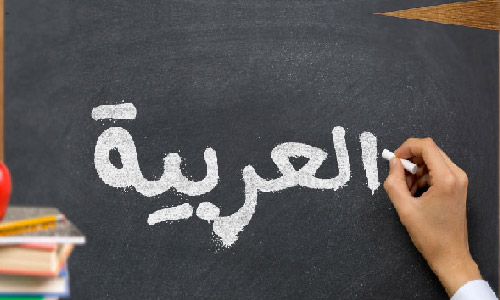Imagine a world where wealth flows naturally from those who have abundance to those in need, creating a cycle of prosperity that benefits entire communities. This isn’t just a utopian dream—it’s the practical reality that Zakat, one of Islam’s Five Pillars, has been creating for over 1,400 years.
Zakat represents far more than a simple charitable donation. It stands as a fundamental pillar of Islamic faith, designed to purify wealth, strengthen communities, and build bridges between different economic classes. For millions of Muslims worldwide, understanding and practicing Zakat properly is essential not only for spiritual fulfillment but also for contributing to a more equitable society.
This comprehensive guide will walk readers through everything they need to know about Zakat—from its spiritual foundations to practical calculations, from understanding who should pay to knowing how it transforms communities around the world.
Understanding Zakat: Definition and Core Meaning
The word “Zakat” derives from the Arabic root “z-k-w,” which carries profound meanings of purification, growth, and blessing. In its literal sense, Zakat means “to purify” and “to grow,” reflecting the dual nature of this Islamic obligation—it purifies the giver’s wealth while promoting growth in both spiritual and material terms.
From an Islamic jurisprudence perspective, Zakat is defined as a mandatory annual payment calculated as a specific percentage of a Muslim’s accumulated wealth and assets. This isn’t merely a tax or fee; it’s a spiritual act that cleanses both the soul and the wealth from which it’s given.
The spiritual significance of wealth purification through Zakat runs deep in Islamic philosophy. When individuals hold onto wealth without sharing it with those in need, Islamic teachings suggest that this wealth can become spiritually impure, potentially leading to greed, selfishness, and spiritual stagnation. Zakat acts as a spiritual cleanser, removing these negative qualities and replacing them with generosity, empathy, and community consciousness.
What distinguishes Zakat from voluntary charity (sadaqah) is its mandatory nature and specific calculations. While sadaqah can be given at any time in any amount according to one’s capacity and desire, Zakat follows precise rules regarding who must pay, how much they must pay, and when it must be paid. This systematic approach ensures consistent support for society’s most vulnerable members.
What is Zakat in Islam: Religious Foundation
The religious foundation of Zakat is deeply rooted in Islamic scripture and tradition. The Quran establishes Zakat as a divine obligation in numerous verses, often mentioning it alongside prayer (salah) to emphasize its fundamental importance. One of the most cited verses states: “And establish prayer and give Zakat, and bow with those who bow” (Quran 2:43).
Prophetic traditions (hadith) further elaborate on Zakat’s significance and implementation. The Prophet Muhammad (peace be upon him) provided detailed guidance on calculating Zakat, identifying recipients, and understanding its spiritual benefits. These teachings form the practical framework that Muslims follow today when fulfilling their Zakat obligations.
As the third pillar of Islam, Zakat holds a position of tremendous importance in the faith structure. The Five Pillars—declaration of faith (shahada), prayer (salah), Zakat, fasting (sawm), and pilgrimage (hajj)—work together to create a complete spiritual and social framework for Muslim life. Zakat’s placement among these fundamental practices highlights its essential role in Islamic worship and community building.
The frequent pairing of prayer and Zakat in Islamic teachings isn’t coincidental. While prayer connects individuals to Allah through spiritual communication, Zakat connects them to their community through practical action. This combination ensures that Islamic practice encompasses both vertical (human-to-divine) and horizontal (human-to-human) relationships.
The balance between spiritual and social responsibilities that Zakat represents is unique among world religions. It acknowledges that true spiritual development cannot occur in isolation from social consciousness and that material wealth carries inherent social responsibilities.
Types of Zakat: Understanding the Categories
Zakat al-Mal (Wealth Zakat)
Zakat al-Mal, or wealth Zakat, represents the annual purification of accumulated assets and wealth. This type of Zakat applies to various categories of possessions that have reached specific thresholds and been held for a complete lunar year.
The beauty of Zakat al-Mal lies in its comprehensive approach to different wealth types. It doesn’t just focus on cash savings but extends to gold and silver, business inventory, livestock, agricultural produce, and even modern investment vehicles. This comprehensive coverage ensures that all forms of wealth contribute to community welfare.
Nisab thresholds—the minimum amounts of wealth that trigger Zakat obligations—vary depending on the type of asset. These thresholds ensure that only those with sufficient means contribute to Zakat, protecting those who are still building their financial stability.
Zakat al-Fitr (Eid Charity)
Zakat al-Fitr, also known as Zakat Eid Fitr, serves a different but equally important purpose in Islamic practice. This form of Zakat is specifically tied to the end of Ramadan and the celebration of Eid al-Fitr.
What is Zakat al Fitr? It’s a fixed amount of charity that every Muslim must pay before the Eid prayer, regardless of their wealth level. The purpose extends beyond mere charity—it purifies those who fasted during Ramadan from any shortcomings in their fast and provides food for the needy during the celebration.
The key difference between Zakat ul Fitr and regular Zakat lies in timing, amount, and eligibility. While Zakat al-Mal is calculated annually based on wealth accumulation, Zakat al-Fitr is a fixed amount paid once per year by every Muslim, including children, making it more inclusive across economic levels.
The timing of Zakat al-Fitr is crucial—it must be paid before the Eid prayer to be considered valid. This ensures that needy families can participate in Eid celebrations with dignity and joy.
How Do We Calculate Zakat: A Practical Guide
Determining Zakatable Assets
Understanding how to calculate Zakat begins with identifying which assets are subject to this obligation. The process requires careful consideration of various wealth categories and their specific requirements.
Cash and bank savings represent the most straightforward zakatable assets. This includes money in checking accounts, savings accounts, certificates of deposit, and physical cash holdings. The key factor is that these funds must have been held for a complete lunar year and exceed the nisab threshold.
Gold and silver jewelry present more complex considerations. While jewelry worn regularly for personal adornment may have different rulings depending on Islamic school of thought, gold and silver held as investments are generally subject to Zakat. The weight of precious metals is measured against current market values to determine Zakat liability.
Business inventory and investments require careful evaluation. Stock in trade, raw materials, finished goods ready for sale, and various investment vehicles like stocks and bonds typically fall under Zakat obligations. The challenge lies in accurately valuing these assets at the time of Zakat calculation.
Modern assets such as cryptocurrencies, digital investments, and online business revenues are increasingly relevant in today’s economy. Islamic scholars generally treat these assets similarly to traditional investments, subjecting them to Zakat when they meet the necessary conditions.
Nisab Calculation Methods
The nisab represents the minimum threshold of wealth that triggers Zakat obligations. Islamic law provides two standards for calculating nisab: the gold standard and the silver standard.
The gold standard sets the nisab at 85 grams of gold, while the silver standard uses 595 grams of silver. Since gold and silver prices fluctuate independently, these two standards often yield different nisab amounts. Many Islamic scholars recommend using whichever standard results in a lower nisab threshold, ensuring that more people contribute to helping those in need.
Current nisab thresholds change with precious metal market prices, making it important for Muslims to check current rates when calculating their Zakat obligations. Various Islamic organizations and websites provide updated nisab calculations to assist with this process.
The choice between lunar year and calendar year considerations affects timing and calculation accuracy. Islamic law traditionally uses the lunar calendar, which is approximately 11 days shorter than the solar calendar, potentially affecting the exact timing of Zakat payments.
Step-by-Step Calculation Process
Calculating Zakat follows a systematic process that ensures accuracy and compliance with Islamic requirements. The first step involves assessing total zakatable wealth across all categories—cash, precious metals, investments, business assets, and any other qualifying possessions.
Next, individuals must deduct legitimate debts and immediate necessary expenses from their total wealth. This might include outstanding loans, mortgages, credit card debts, and essential living expenses for the upcoming period. The goal is to calculate net zakatable wealth rather than gross assets.
Once net zakatable wealth is determined, the standard Zakat rate of 2.5% applies to most asset categories. Some specific assets like agricultural produce or livestock may have different rates, but the 2.5% rate covers the majority of modern Zakat calculations.
Special cases and exemptions require additional consideration. Personal residences, vehicles used for transportation, professional tools, and household necessities typically don’t count toward zakatable wealth. However, multiple properties, luxury vehicles, or assets held as investments generally do qualify for Zakat assessment.
Who Pays Zakat and Who Receives It
Zakat Payers (Muzakki)
Understanding who must pay Zakat involves several important conditions that determine obligation. The primary requirement is reaching the nisab threshold and maintaining that level of wealth for a complete lunar year. This ensures that only those with sustained financial capacity contribute to Zakat.
Mental capacity and age requirements also play important roles in Zakat obligations. Adult Muslims of sound mind bear personal responsibility for calculating and paying their Zakat. However, guardians of minor children or individuals with mental disabilities may need to pay Zakat on their behalf if their assets meet the required criteria.
The duration requirement ensures that wealth has been held long enough to generate the stability needed for Zakat obligations. Temporary wealth spikes that don’t last a full year typically don’t trigger Zakat requirements, recognizing that short-term financial gains may not represent true financial stability.
Zakat Recipients (Mustahiq)
The Quran specifically identifies eight categories of Zakat recipients, providing clear guidance on who should benefit from these funds. These categories include the poor (fuqara), the needy (masakin), Zakat administrators, those whose hearts are to be reconciled, those in bondage, debtors, those fighting in the path of Allah, and travelers in need.
Modern interpretation of these categories requires thoughtful consideration of contemporary circumstances. The poor and needy remain primary recipients, but understanding how to identify and reach them in today’s complex economic environment requires updated approaches.
Zakat administrators—those who collect, manage, and distribute Zakat funds—can receive compensation for their work, ensuring that Zakat distribution systems remain effective and sustainable.
The category of “those whose hearts are to be reconciled” has been interpreted in various ways throughout Islamic history, sometimes including new converts to Islam or those who might be positively influenced toward the faith through charitable assistance.
Local versus global distribution considerations reflect an ongoing discussion among Islamic scholars and communities. While some emphasize supporting immediate community members, others advocate for addressing the most severe need regardless of geographic location.
Zakat vs. Sadaqah: Understanding the Distinction
The distinction between Zakat and Sadaqah illuminates different aspects of Islamic charitable practice. Zakat’s mandatory nature creates a reliable social safety net, while Sadaqah’s voluntary character encourages additional generosity and personal spiritual development.
Zakat follows specific rules regarding amounts, timing, and recipients, making it a systematic form of social support. Sadaqah, conversely, can be given at any time, in any amount, to anyone in need, providing flexibility for spontaneous generosity and personal charitable preferences.
The spiritual rewards associated with each form of giving differ in Islamic teaching. While both bring spiritual benefits, Zakat fulfills a fundamental religious obligation, and failure to pay it is considered a serious spiritual shortcoming. Sadaqah, being voluntary, represents additional spiritual merit beyond basic religious requirements.
Practical examples help illustrate these differences. When someone calculates that they owe $1,000 in annual Zakat, that amount must be distributed according to Islamic guidelines to eligible recipients. However, if the same person chooses to donate an additional $500 to a local food bank, disaster relief, or educational program, that additional amount represents Sadaqah.
Both forms of giving complement each other in creating comprehensive charitable practice. Zakat ensures systematic support for society’s most vulnerable members, while Sadaqah enables individuals to respond to specific needs, support causes they’re passionate about, and go beyond minimum charitable requirements.
The Social Impact of Zakat
Zakat’s role in wealth redistribution and economic justice represents one of its most significant social contributions. By systematically transferring resources from those with financial abundance to those in need, Zakat helps prevent extreme wealth concentration while providing essential support for economic mobility.
Community development through Zakat funds extends beyond immediate poverty relief. When properly organized, Zakat can fund education programs, small business development, healthcare initiatives, and infrastructure projects that benefit entire communities. This approach transforms Zakat from simple charity into comprehensive community investment.
Historical examples of Zakat’s societal benefits provide inspiring models for contemporary application. During the early Islamic period, effective Zakat collection and distribution sometimes eliminated poverty entirely in certain regions, demonstrating the system’s potential when properly implemented.
Modern Zakat collection and distribution systems leverage technology and organizational sophistication to maximize impact. Online platforms enable global Zakat distribution, while data analytics help identify the most effective intervention strategies. Professional Zakat organizations now operate with the efficiency and transparency that donors expect.
The multiplier effect of Zakat extends beyond direct recipients. When families receive Zakat assistance, they often become consumers in local economies, supporting businesses and creating employment opportunities. This economic circulation amplifies Zakat’s positive impact throughout communities.
Common Questions and Misconceptions
Frequent doubts about Zakat calculation often center on modern financial instruments and complex asset valuations. Questions about retirement accounts, stock options, cryptocurrency holdings, and international investments require careful consideration of Islamic principles applied to contemporary financial realities.
Misconceptions about Zakat recipients sometimes lead to inappropriate restrictions on distribution. Some people mistakenly believe Zakat can only go to Muslims, or only to people in their immediate geographic area, when Islamic law actually provides more flexibility in recipient selection.
Modern challenges include digital assets, international transfers, and cross-border Zakat distribution. Cryptocurrency valuations, international investment portfolios, and global humanitarian needs create complexity that earlier Islamic legal frameworks didn’t directly address.
Scholarly consensus on contemporary issues continues evolving as Islamic legal experts examine new financial instruments and social circumstances. Organizations like the Islamic Society of North America, the European Council for Fatwa and Research, and various national Islamic councils regularly address these emerging questions.
Technology-related questions increasingly appear in Zakat discussions. Issues like whether app-based investments, digital gold holdings, or online business revenues follow traditional Zakat rules require ongoing scholarly attention and practical guidance.
Practical Tips for Zakat Management
Keeping accurate wealth records forms the foundation of proper Zakat calculation. Many Muslims find it helpful to maintain spreadsheets or use financial tracking apps that categorize assets according to Zakat requirements. Regular record-keeping throughout the year makes annual Zakat calculation much more manageable.
Zakat calculators and mobile apps can simplify the calculation process significantly. Many Islamic organizations provide free online calculators that guide users through step-by-step Zakat assessment. However, users should verify that these tools align with the Islamic legal school they follow, as some calculation details vary between different scholarly approaches.
Finding trustworthy Zakat organizations requires research into their financial transparency, distribution methods, and theological approach. Reputable organizations typically publish annual reports showing how funds are collected and distributed, maintain clear governance structures, and align with recognized Islamic legal principles.
Tax implications of Zakat payments vary significantly between different countries and tax systems. In some nations, Zakat payments may qualify for charitable deductions, while others don’t recognize religious obligations in tax calculations. Muslims should consult qualified tax professionals who understand both Islamic law and local tax regulations.
Planning Zakat payments throughout the year can improve both financial management and spiritual practice. Rather than scrambling to calculate and pay Zakat at the last minute, many Muslims find it beneficial to estimate their annual obligation and make quarterly or monthly payments toward that goal.
The Spiritual Dimension of Zakat
The purification of wealth and soul through Zakat represents its deepest spiritual significance. Islamic teaching suggests that wealth can become spiritually contaminated when hoarded or used purely for selfish purposes. Zakat cleanses this contamination, restoring the spiritual purity of both wealth and the person who possesses it.
Building empathy and social consciousness through Zakat practice connects individuals to broader human experiences. When people regularly consider their obligations to others and actively contribute to addressing social needs, they develop deeper awareness of community interdependence and social responsibility.
Strengthening faith through giving creates positive spiritual cycles that enhance overall religious practice. Many Muslims report that fulfilling their Zakat obligations increases their sense of spiritual satisfaction and connection to Islamic principles, making other religious practices more meaningful and fulfilling.
The concept of wealth as a trust (amanah) fundamentally shapes Islamic approaches to money and possessions. Rather than viewing wealth as purely personal property, Islamic philosophy suggests that individuals serve as trustees of resources that ultimately belong to Allah. This perspective makes sharing wealth through Zakat a natural expression of proper stewardship rather than a burden or loss.
Psychological benefits of regular giving extend beyond spiritual rewards. Research consistently shows that charitable giving correlates with increased happiness, reduced stress, and greater life satisfaction. Zakat provides a structured way to experience these psychological benefits while fulfilling religious obligations.
Embracing the Zakat Obligation
The transformative power of Zakat extends far beyond individual charitable acts. When Muslims embrace their Zakat obligations wholeheartedly, they participate in a global system of social justice that has been creating positive change for centuries.
Understanding Zakat’s meaning and practice requires both intellectual learning and practical application. This guide has covered the essential knowledge needed to calculate and pay Zakat properly, but true understanding comes through consistent practice and ongoing reflection on its spiritual and social significance.
The systematic nature of Zakat makes it particularly powerful as a tool for social change. Unlike sporadic charitable giving, Zakat creates predictable resource flows that enable long-term planning and sustainable assistance programs. This reliability makes Zakat-funded initiatives more effective than many other charitable approaches.
For Muslims seeking to fulfill this fundamental pillar of their faith, the journey begins with accurate calculation of current obligations and commitment to consistent future practice. The spiritual rewards of proper Zakat payment combine with the social impact of supporting community welfare to create meaningful engagement with Islamic principles.
Modern Muslims have unprecedented access to tools, resources, and organizations that can facilitate proper Zakat practice. Taking advantage of these resources while maintaining focus on the spiritual dimensions of giving can help individuals experience the full benefits that Zakat offers both personally and communally.
Additional Resources
Recommended Zakat Calculation Tools
Several reputable organizations provide comprehensive online Zakat calculators that can assist with accurate calculations:
- Islamic Society of North America (ISNA) Zakat Calculator
- Islamic Relief Worldwide Zakat Calculator
- LaunchGood Zakat Calculator
- Zakat Foundation of America Calculator
- National Zakat Foundation (UK) Calculator
Trusted Zakat Collection Organizations
When selecting organizations for Zakat distribution, consider these established institutions:
- Islamic Relief Worldwide – Global humanitarian organization
- Zakat Foundation of America – Comprehensive social services
- Islamic Society of North America – Community-based distribution
- Human Appeal International – International development focus
- Helping Hand for Relief and Development – Emergency and development aid
Further Reading on Islamic Finance
Readers interested in deeper study of Islamic financial principles might explore:
- “Islamic Finance: Principles and Practice” by Hans Visser
- “Introduction to Islamic Finance” by Muhammad Ayub
- “Islamic Banking and Finance: Principles and Practices” by Jasser Auda
- “The Elements of Islamic Finance” by Abdullah Saeed
Contact Information for Religious Guidance
For specific questions about Zakat calculations or Islamic legal rulings:
- Consult local mosque leadership and Islamic scholars
- Contact Islamic legal institutions in your region
- Reach out to established Islamic organizations with religious guidance departments
- Consider online fatwa services from recognized Islamic authorities
Remember that Zakat represents both a personal spiritual obligation and a collective social responsibility. By understanding its principles, calculating it accurately, and distributing it properly, Muslims can participate fully in this beautiful system of community support that has been strengthening Islamic societies for over 1,400 years.








